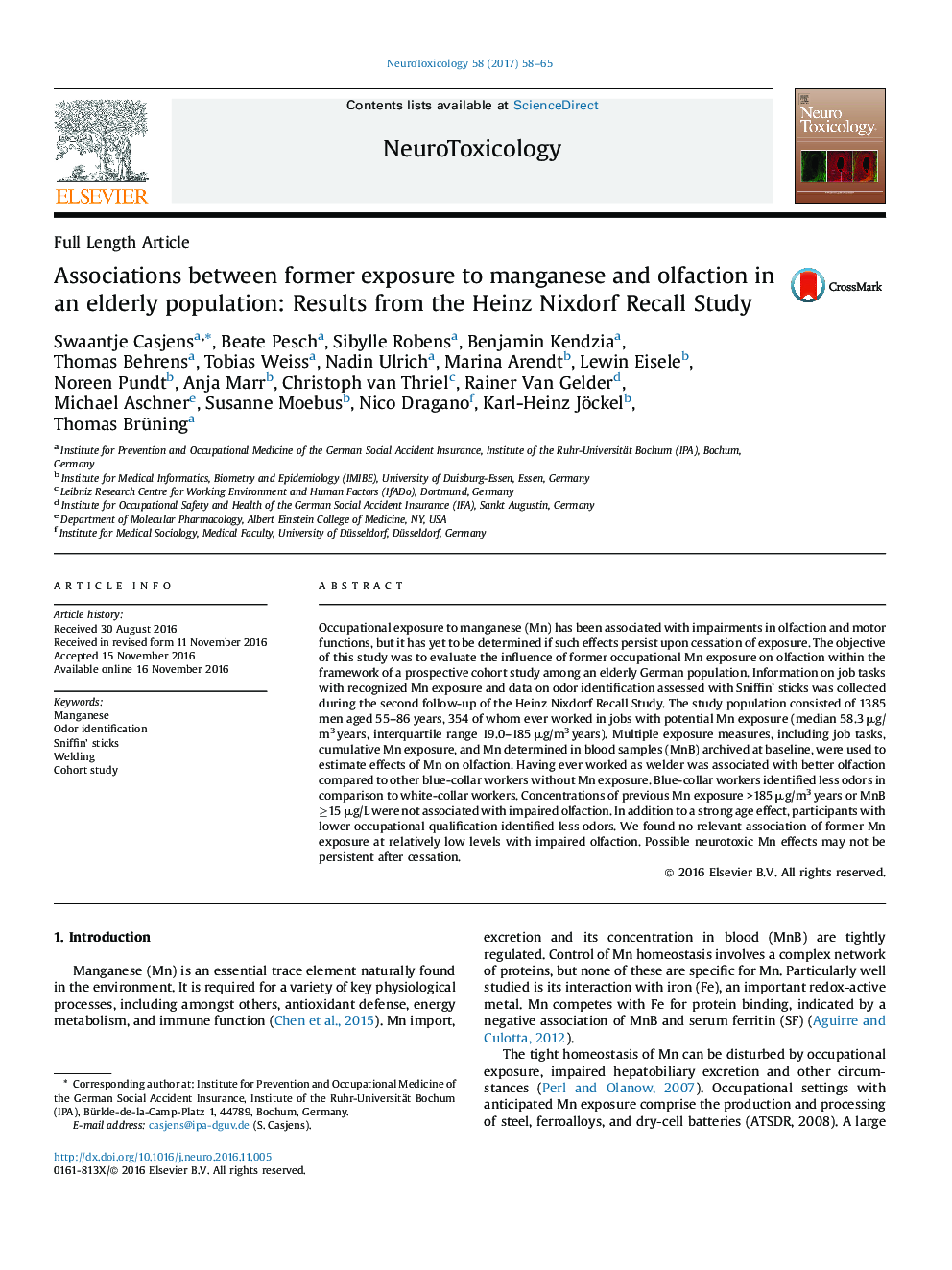| Article ID | Journal | Published Year | Pages | File Type |
|---|---|---|---|---|
| 5560864 | NeuroToxicology | 2017 | 8 Pages |
â¢Olfaction tested in a population-based cohort from a steel-producing region.â¢Cumulative exposure to inhalable Mn based on 4635 measurements.â¢No association found between former exposure to Mn and impaired olfaction.
Occupational exposure to manganese (Mn) has been associated with impairments in olfaction and motor functions, but it has yet to be determined if such effects persist upon cessation of exposure. The objective of this study was to evaluate the influence of former occupational Mn exposure on olfaction within the framework of a prospective cohort study among an elderly German population. Information on job tasks with recognized Mn exposure and data on odor identification assessed with Sniffin' sticks was collected during the second follow-up of the Heinz Nixdorf Recall Study. The study population consisted of 1385 men aged 55-86 years, 354 of whom ever worked in jobs with potential Mn exposure (median 58.3 μg/m3âyears, interquartile range 19.0-185 μg/m3âyears). Multiple exposure measures, including job tasks, cumulative Mn exposure, and Mn determined in blood samples (MnB) archived at baseline, were used to estimate effects of Mn on olfaction. Having ever worked as welder was associated with better olfaction compared to other blue-collar workers without Mn exposure. Blue-collar workers identified less odors in comparison to white-collar workers. Concentrations of previous Mn exposure >185 μg/m3âyears or MnB â¥15 μg/L were not associated with impaired olfaction. In addition to a strong age effect, participants with lower occupational qualification identified less odors. We found no relevant association of former Mn exposure at relatively low levels with impaired olfaction. Possible neurotoxic Mn effects may not be persistent after cessation.
